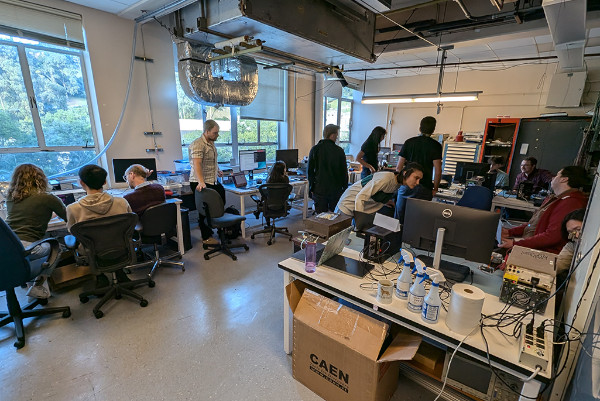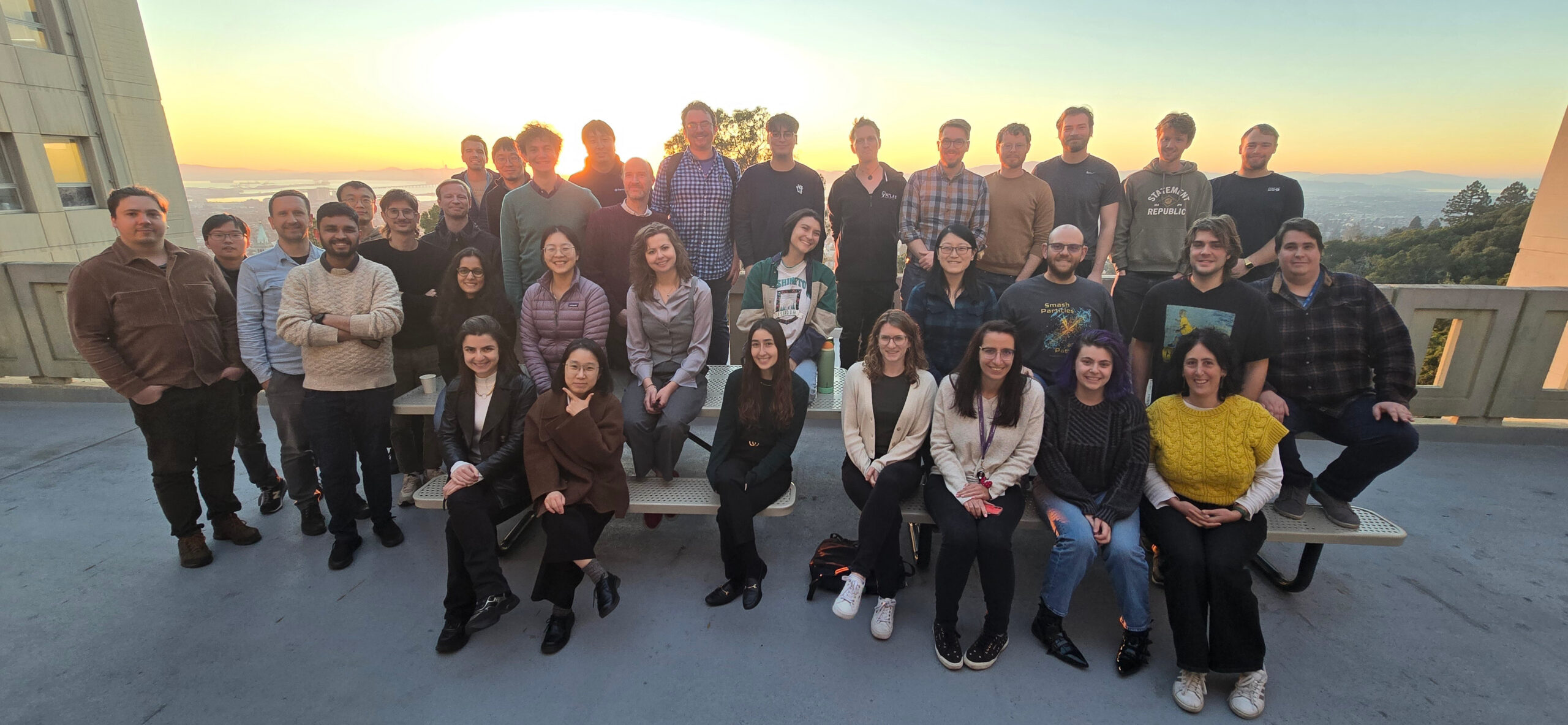ATLAS ITk Workshop
Berkeley Lab hosts ATLAS ITk Workshop on January 13-17

Credit: Maruice Garcia-Scivares, Berkeley Lab
February 07, 2025 — Marsha Fenner
Berkeley Lab Physics Division News
Berkeley Lab’s Physics Division hosted a week-long ATLAS ITk Pixel Module QC Workshop on January 13-17. Around 30 researchers from around the world gathered at Berkeley Lab to share their knowledge of the ATLAS pixel modules, the various quality control (QC) procedures for electrical performance, and the new data analysis software tools available to handle these QC procedures.
This workshop comes at a very interesting time. The ATLAS Collaboration is in the final sprint to conclude its ambitious replacement of ATLAS’ tracker detector in preparation for the High Luminosity Large Hadron Collider (HL-LHC) upgrade program at CERN, in Switzerland. The upgraded detector is based on silicon modules (made up of sensors and read-out electronics) that are organized in concentric cylinders. The innermost layer of silicon pixels is situated just 33 millimeters away from the collision point, while the outermost layer of the silicon strip detectors is placed at a radius of 1 meter. In between, there are 7 additional layers of silicon, for a total of 13 square meters of pixel detectors (up from 2 square meters in the current detector) and 165 square meters of strip detectors (up from 68 square meters in the current detector). Berkeley Lab has played a crucial role in designing the pixel and strip detectors, for example in the pixel front-end chip design and testing, the strip stave design, and the mechanical support structures for the whole detector, among other contributions.
Because of the sheer size of the detector, the production of its components has already started at institutes all over the world, with the goal of completing the full detector assembly by 2029. The task of producing the required 10,000 pixel modules has been distributed to over 20 institutes, spanning Japan, Europe, and the U.S., and Berkeley Lab will produce a significant fraction of some of the pixel and strip components. To guarantee that all of the necessary parts are of the same quality and perform at the same level, some of the physicists in Berkeley Lab's ATLAS Group have spent the past 2 years working with colleagues across the ATLAS Collaboration to develop new calibrations and procedures that verify the quality of the pixel modules. They’ve also developed a new suite of software tools to automate the process of measuring and analyzing the modules’ electrical performance.
“The project is at the cusp of starting a 2-year production phase, so it seemed like the perfect time to invite our collaborators to Berkeley and provide an opportunity for them to become familiar with the procedures and tools, or to get directly involved in the development of the tools,” said workshop organizer Elisabetta Pianori, a staff scientist in Berkeley Lab’s ATLAS Group.
The workshop consisted of morning lectures, which provided an introduction to the main properties of the modules’ readout electronics, the data acquisition system used to control them, and the procedures used to test their performances. Participants also learned from Hideyuki Oide (an associate professor at Japan’s KEK High Energy Accelerator Research Organization) and Giordon Stark (a project scientist at UCSC) about the data pipeline infrastructure that handles the flow of the results from the test bench to the experiment’s main database.
During hands-on sessions in the afternoon, participants moved into the labs, and in groups of two or three people either tested modules or contributed to software development. As part of the registration process, attendees self-identified as beginners, intermediates, or experts, so the organizers prepared applicable activities spanning minor code adjustments to making software architecture decisions to completing performance studies. By the end of the workshop, each participant had either contributed to the code base or completed a study.
In a post-workshop survey, participants complimented the effectiveness of the workshop’s “fruitful and stimulating” hackathon format as well as the organizers’ supportive, hands-on approach to sharing new technologies and the development of software tools and pixel module production. Other comments included “I could give this workshop an A grade,“ and, ”Thank you for organizing this! I feel like we have needed this for a long time.“
The workshop was organized by Pianori and Timon Heim, both staff scientists in Berkeley Lab’s ATLAS Group; along with Marija Marjanovic, a research scientist at the University of Oklahoma; and Linxing Meng, a research scientist at the University of Lancaster in the U.K. According to Pianori, “None of this could have happened without the incredible work from some of the Berkeley Lab’s ATLAS Group students and postdocs who were instrumental in the success of the workshop.” The organizers extend their special thanks to Chamberlain Postdoctoral Fellows Deion Fellers and Emily Thompson, and graduate students Charlie Hultquist and Luc Le Pottier, who all spent their afternoons helping and guiding the small teams working in the labs.

Credit: Simone Pagan-Griso, Berkeley Lab